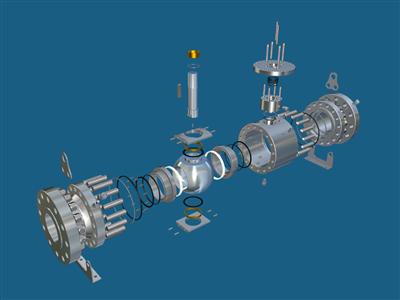(1) It is necessary to find out that the upstream and downstream pipelines of the ball valve have indeed relieved the pressure before disassembling and disassembling.
(2) Non-metal parts should be taken out of the cleaning agent immediately after cleaning, and should not be soaked for a long time.
(3) The bolts on the flange must be tightened symmetrically, gradually and evenly during assembly.
(4) The cleaning agent should be compatible with rubber parts, plastic parts, metal parts and working medium (such as gas) in the ball valve. When the working medium is gas, gasoline (GB484-89) can be used to clean the metal parts. Clean non-metal parts with pure water or alcohol.
(5) Every single ball valve part decomposed can be cleaned by dipping. Metal parts with non-metal parts that have not been decomposed can be scrubbed with a clean, fine silk cloth impregnated with cleaning agent (to prevent fibers from falling off and adhering to the parts). When cleaning, remove all grease, dirt, glue, dust, etc. adhering to the wall surface.
(6) When the ball valve is disassembled and reassembled, care must be taken to prevent damage to the sealing surface of the parts, especially non-metal parts. Special tools should be used when removing the O-ring.
(7) After cleaning, it needs to be assembled after the cleaning agent on the wall surface to be washed evaporates (can be wiped with a silk cloth not soaked in cleaning agent), but it should not be left for a long time, otherwise it will rust and be contaminated by dust.
(8) New parts also need to be cleaned before assembling.
(9) Use grease to lubricate. Grease should be compatible with ball valve metal materials, rubber parts, plastic parts and working medium. When the working medium is gas, for example, special 221 grease can be used. Apply a thin layer of grease on the surface of the seal installation groove, apply a thin layer of grease on the rubber seal, and apply a thin layer of grease on the sealing surface and friction surface of the valve stem.
(10) Metal chips, fibers, grease (except those specified for use), dust, other impurities, foreign objects, etc., should not be allowed to contaminate, adhere or stay on the surface of the parts or enter the cavity during assembly.

Tags :